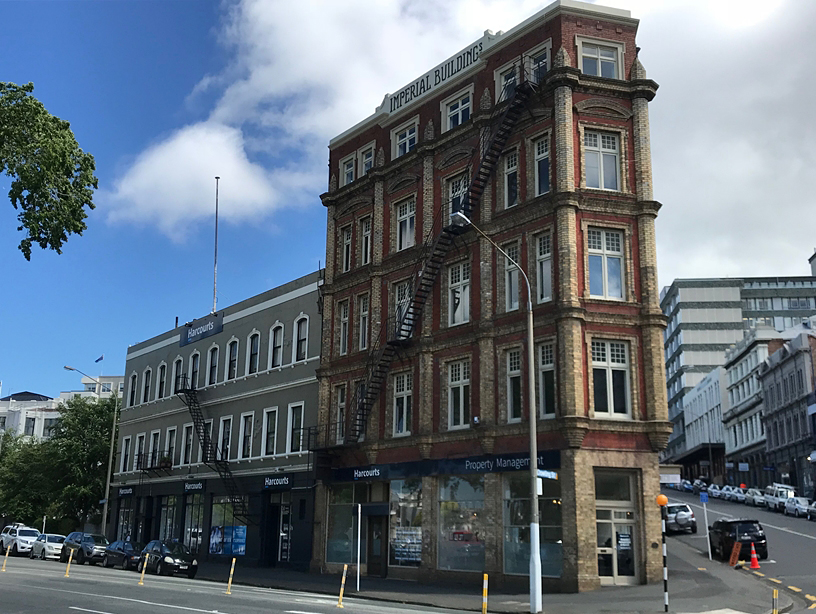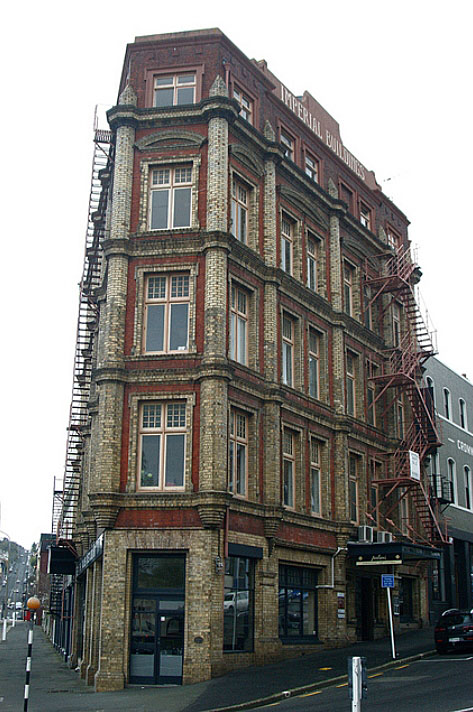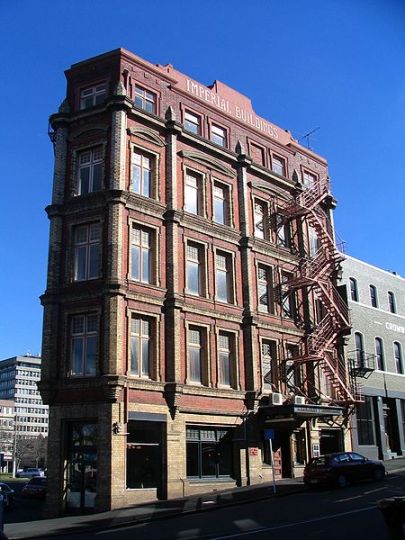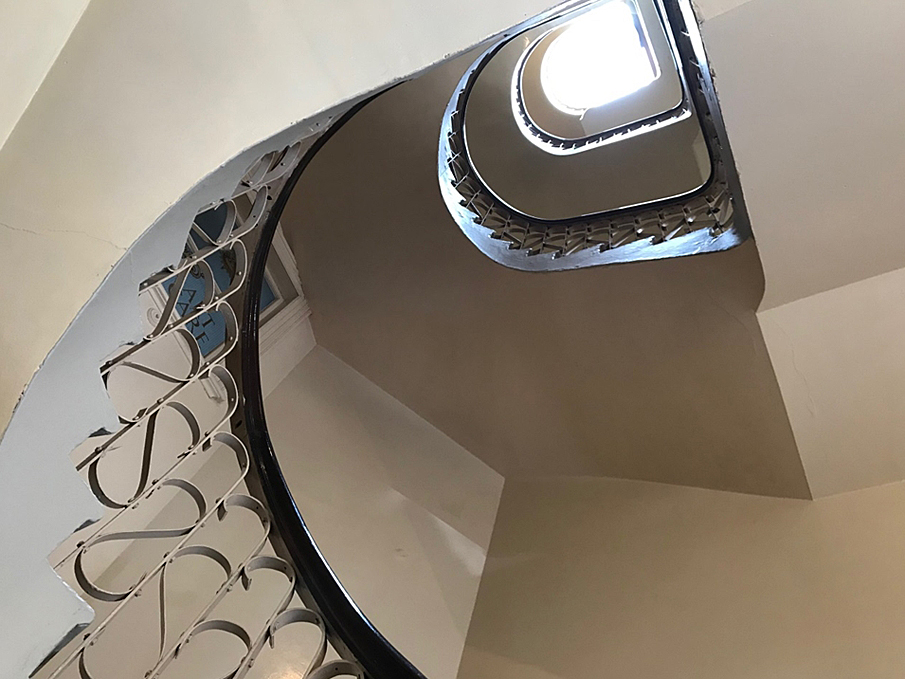The wedge-shaped Imperial Building, also known as Imperial Chambers, stands on the corner of Dowling and Lower High Streets in Dunedin and was built in 1906 for the Stokes Brothers, tailors. The Imperial Building is of architectural significance in the Dunedin cityscape as an outstanding example of Queen Ann Revival design in tuck-pointed polychromatic brick construction, with innovative use of concrete. The land on which the Imperial Building sits is in an area traditionally known to Kāi Tahu Māori as Otēpoti. The land was vacant for some time despite being centrally located in what was a rapidly growing area of Dunedin in the late 19th - early 20th century. An 1872 plan of the Town of Dunedin by J.T. Thompson indicates the site was below the old high water mark. The land was subsequently leased to James Annand, the mayor of Mornington, who was a builder, and had a workshop on the site. In 1884, Block LXIX was purchased by Donald Reid who built his first warehouse, Cromwell Chambers, on part of the Block. The Title to the land was transferred in 1906 to James Makeling Stokes and Henry Stokes, brothers who operated a successful tailoring business. The brothers commissioned the building for the site from Mason and Wales with whom they had previously worked on both commercial and residential projects. Plans for the Imperial Building were drawn and notified in 1905. Mason and Wales designed the building alongside many residential and commercial buildings in Dunedin at the time. The firm was established by William Mason in 1862 and remains the oldest architectural practice in New Zealand. The exterior design of the Imperial Building is a striking monument on Dunedin’s streetscape. The bricks are of particular interest having been imported from the Hoffman’s Brick and Pottery Works in Australia and made using a mechanised technique. This technique was described in the Otago Daily Times as innovative for its potential in saving building costs. The building’s use of concrete was also considered innovative at the time as it utilised reinforced concrete beams instead of wood, a concrete circular stairway linking the basement and top floors, and the concrete ‘visitini’ roof. The interior was a pastiche of different styles and periods with Art Nouveau fibrous plaster ceilings, friezes and wall enrichments. The original decorative parapet was removed to accommodate a fifth storey which was added to the building in 1927. The building has had an uneventful history and over time has housed the business of the Stokes Brothers as well as solicitors, dental surgeons and notably, Dr Agatha Adams, an early graduate of Otago Medical School. Dr Adams was involved in public health education and the Society for the Promotion of the Health of Women and Children with Dr Truby King and Dr Emily Seideberg, and for a short time was a co-director of the Karitane Home for Babies. From 1910 the Imperial Building was owned by James Brown, a pastry cook and confectioner by trade who owned a number of properties in the city. For two decades from 1961 the ground floor space off Dowling Street was the location of the Sirocco Coffee Lounge, known as a gay friendly venue. The building has a history of association with art dealers and art galleries, and from 1981-2013 housed the Palms Restaurant on the ground floor. Currently this floor is occupied by Harcourts Real Estate while the rest of the floors are leased as private offices.




Location
List Entry Information
Overview
Detailed List Entry
Status
Listed
List Entry Status
Historic Place Category 2
Access
Private/No Public Access
List Number
4747
Date Entered
9th September 1986
Date of Effect
9th September 1986
City/District Council
Dunedin City
Region
Otago Region
Extent of List Entry
Extent includes the land described as Pt Blk XLIX Town of Dunedin (RT OT159/215), Otago Land District, and the building known as the Imperial Building thereon.
Legal description
Pt Blk XLIX Town of Dunedin (RT OT159/215), Otago Land District
Stay up to date with Heritage this month
